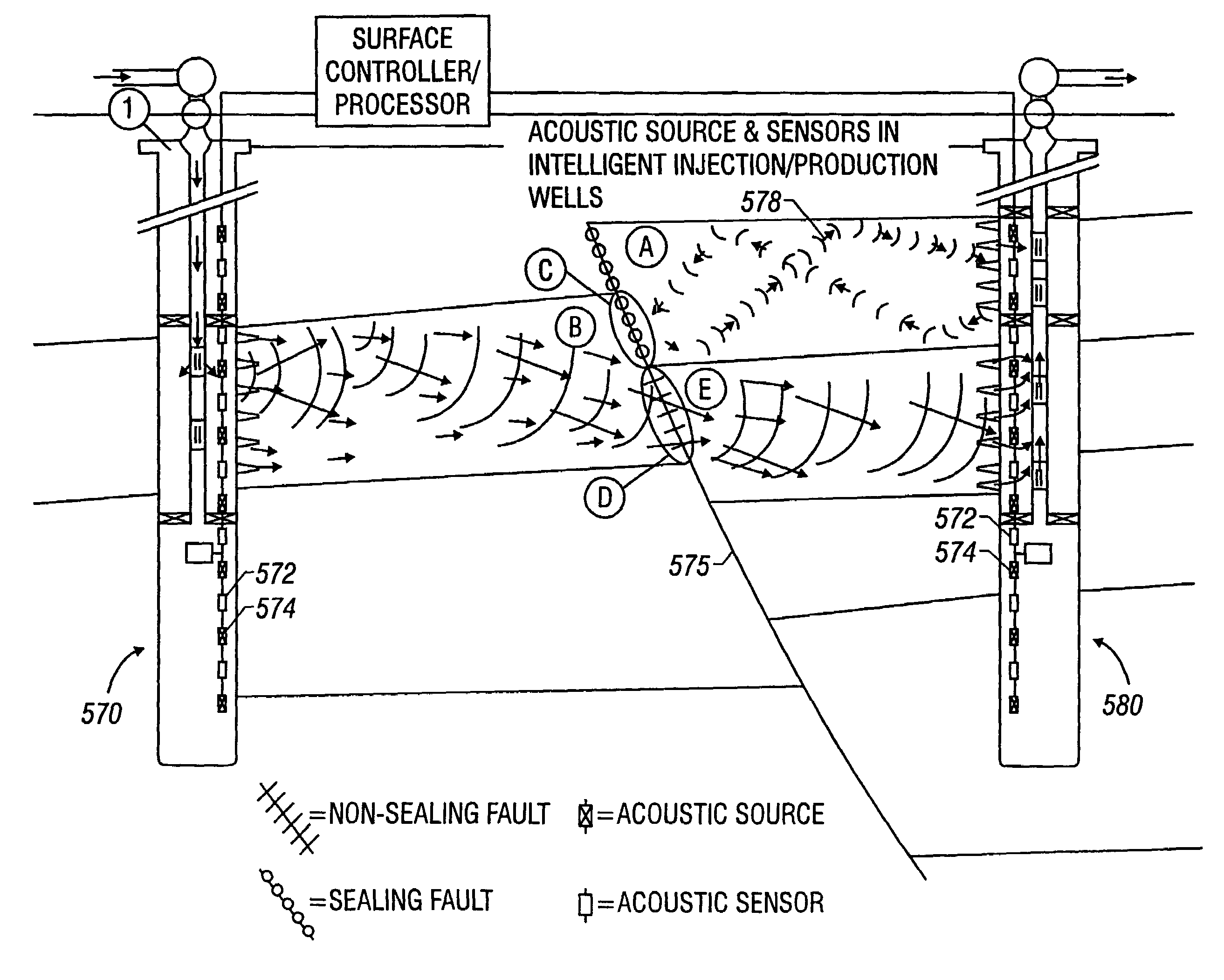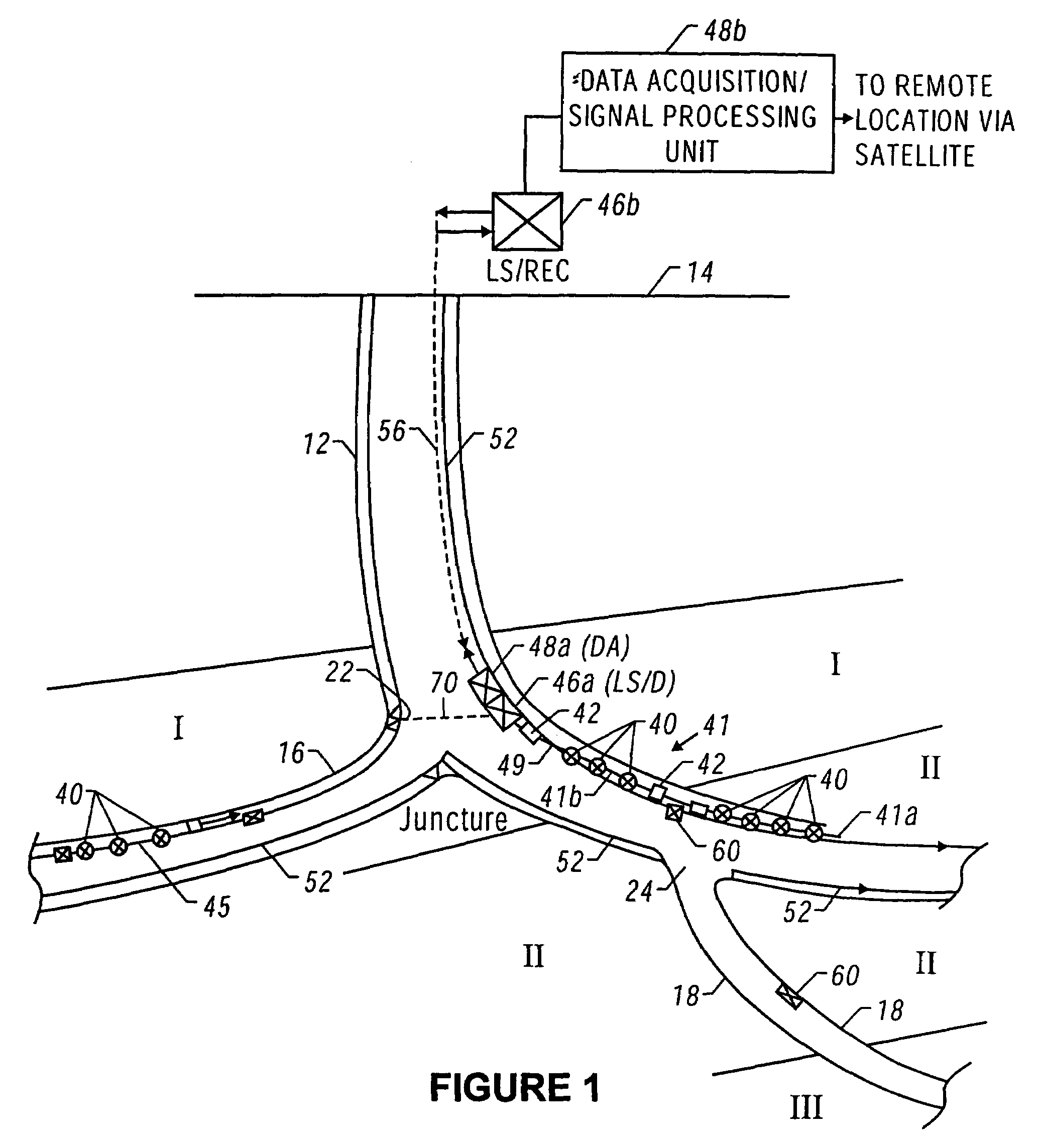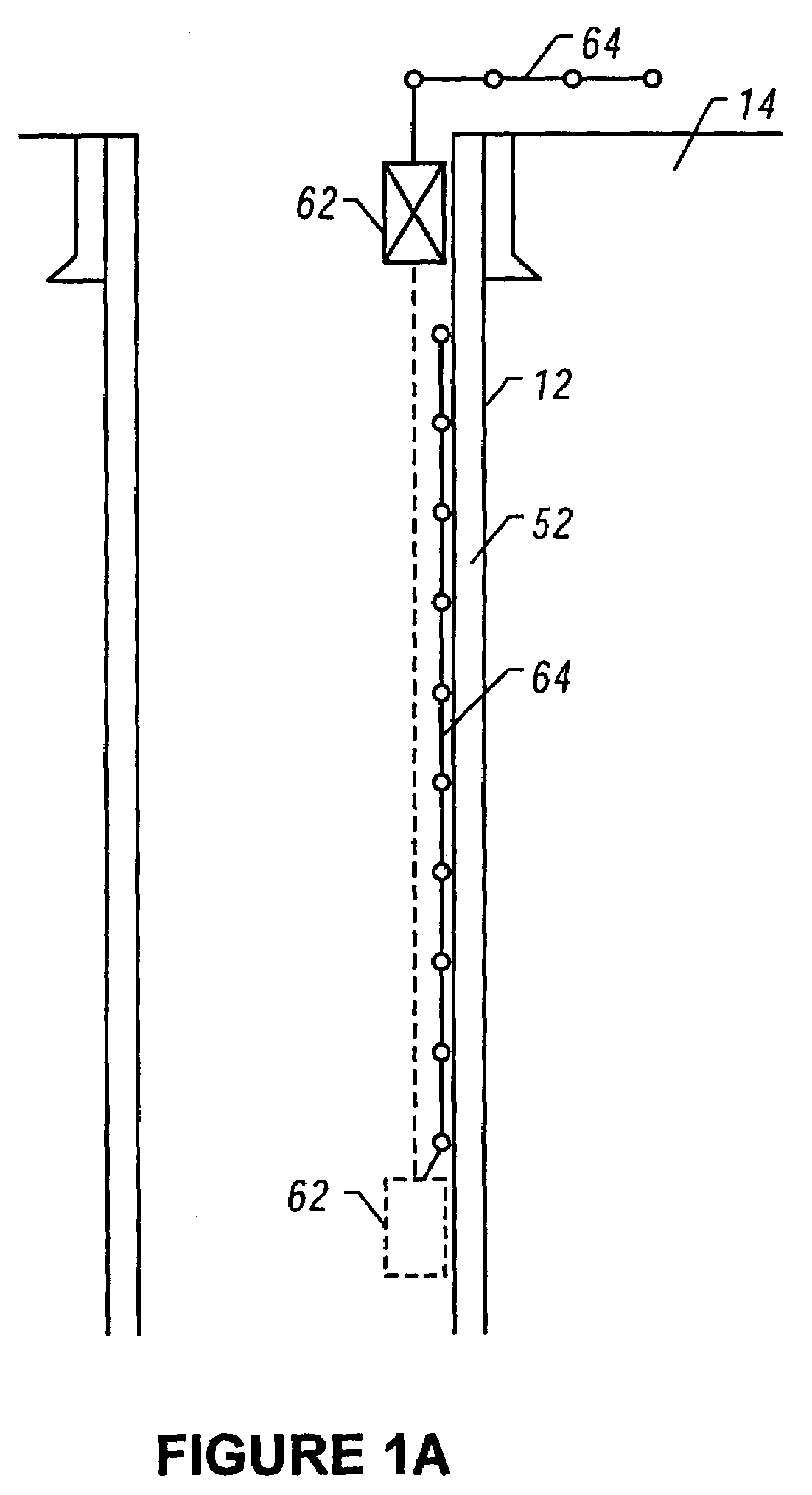Wellbores utilizing fiber optic-based sensors and operating devices
a fiber optic sensor and operating device technology, applied in the field of oilfield operations, can solve the problems of high cost, inability to provide continuous information about the condition of inability to provide continuous information about the wellbore or the surrounding formation, etc., and achieve the effect of high temperatur
- Summary
- Abstract
- Description
- Claims
- Application Information
AI Technical Summary
Benefits of technology
Problems solved by technology
Method used
Image
Examples
Embodiment Construction
[0042]The various concepts of the present invention will be described in reference to FIGS. 1–17, which show a schematic illustrations of wellbores utilizing fiber optic-based sensors and operating devices.
[0043]FIG. 1 shows an exemplary main or primary wellbore 12 formed from the earth surface 14 and lateral wellbores 16 and 18 formed from the main wellbore 18. For the purpose of explanation, and not as any limitation, the main wellbore 18 is partially formed in a producing formation or pay zone I and partially in a non-producing formation or dry formation II. The lateral wellbore 16 extends from the main wellbore at a juncture 22 into the producing formation I, while the lateral wellbore 16 extends from the main wellbore 12 at juncture 24 into a second producing formation III. For the purposes of this illustration only, the wellbores herein are shown as being drilled on land; however, this invention is equally applicable to offshore wellbores. It should be noted that all wellbore ...
PUM
 Login to View More
Login to View More Abstract
Description
Claims
Application Information
 Login to View More
Login to View More - R&D
- Intellectual Property
- Life Sciences
- Materials
- Tech Scout
- Unparalleled Data Quality
- Higher Quality Content
- 60% Fewer Hallucinations
Browse by: Latest US Patents, China's latest patents, Technical Efficacy Thesaurus, Application Domain, Technology Topic, Popular Technical Reports.
© 2025 PatSnap. All rights reserved.Legal|Privacy policy|Modern Slavery Act Transparency Statement|Sitemap|About US| Contact US: help@patsnap.com



